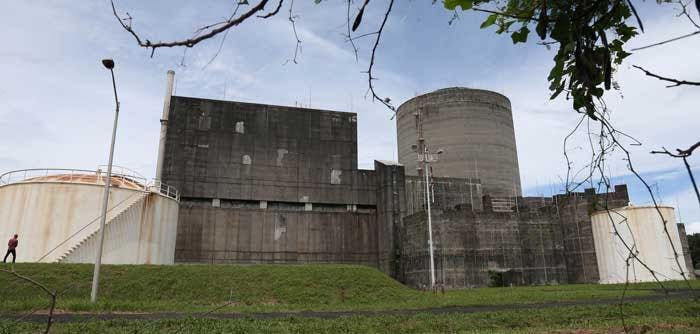Bataan Nuclear Power Plant. PHOTO BY RENE H. DILAN
Worldwide in 2019, there were 450 operational nuclear power reactors that generated 10 percent of the world’s electricity, according to the International Atomic Energy Agency.
Some 30 countries in several continents have them, including the largest economies today.
The United States has about 100 operating reactors and China about half of that. At least 50 more reactors are under construction around the world — regrettably, none in the Philippines.
Power that is both adequate and reliable in supply is a tool of developed nations as well as a requirement of growing economies — such as ours. And here, the high cost of electricity has often been cited as a factor in hampering development and discouraging foreign investments. A major reason for the high costs is simple economics — too much demand, especially as the economy grows, and not enough supply. Of course, there are other factors such as the rising fuel prices over the years and inefficiencies, but the fundamentals cannot be ignored.
The Duterte government seems to understand the problem. In July, the President issued Executive Order 116 that ordered a feasibility study on nuclear power and drew up a national position on a nuclear energy program. To do this, the order also created the Nuclear Energy Program Inter-Agency Committee, which will be headed by the Department of Energy.
It is about time, we say. Opposition to nuclear power in the Philippines has largely been political and emotional rather than scientific and practical.
Nuclear power in the Philippines is associated with the Marcos era, whose policies and legacies were opposed by the Aquino administrations and their supporters. The BNPP was mothballed in the aftermath of the Chernobyl nuclear power plant disaster in 1986, when then President Corazon Aquino was swept into office. During her watch, she also scrapped the Ministry of Energy.
Meanwhile, various environmental groups have also opposed nuclear energy development here as they have elsewhere. Greenpeace, for instance, claims that nuclear power, contrary to statements by Energy Secretary Alfonso Cusi, is expensive and dangerous.
That has not been the case with the country’s only nuclear facility, the Philippine Research Reactor-1 that was in operation in Quezon City from 1963 to 1988. The fact that it was hardly in the news suggests that concerns over nuclear power may be misplaced if not exaggerated.
Keep BNPP shuttered
That Greenpeace claim may be debatable, but less so is the argument to keep the Bataan plant closed. Many of those pushing for the development of nuclear power are also for the retrofitting and eventual reopening that mothballed facility. That would be a mistake and counterproductive in convincing people about having nuclear power in the energy mix, particularly if any accident were to happen in Bataan.
The main argument against the BNPP is that it was designed and built using old technology and concepts. The plant may have been fine in the 1970s when construction began and, perhaps, even in the following decade when it was supposed to go online. But it is a mistake to assume that the BNPP is still pristine just because it was never used. More likely, it is obsolete and degraded by time and lack of use.
If the government is to construct a nuclear plant, it should do so from the ground up, using the latest design and technology. Technology has advanced a lot in the past decades, and much more has been learned about keeping nuclear plants safe.
Finally, the government should also remember that the nuclear energy option and renewable sources are not mutually exclusive options. It should pursue both: nuclear to supply the baseload and renewables to complement it. Such an energy mix already exists around the world, and there are plenty of best practices that the Philippines should carefully study.
https://www.manilatimes.net/2020/10/04/opinion/editorial/yes-to-nuclear-power-no-to-revival-of-bnpp/775914/
Sunday, October 4, 2020




